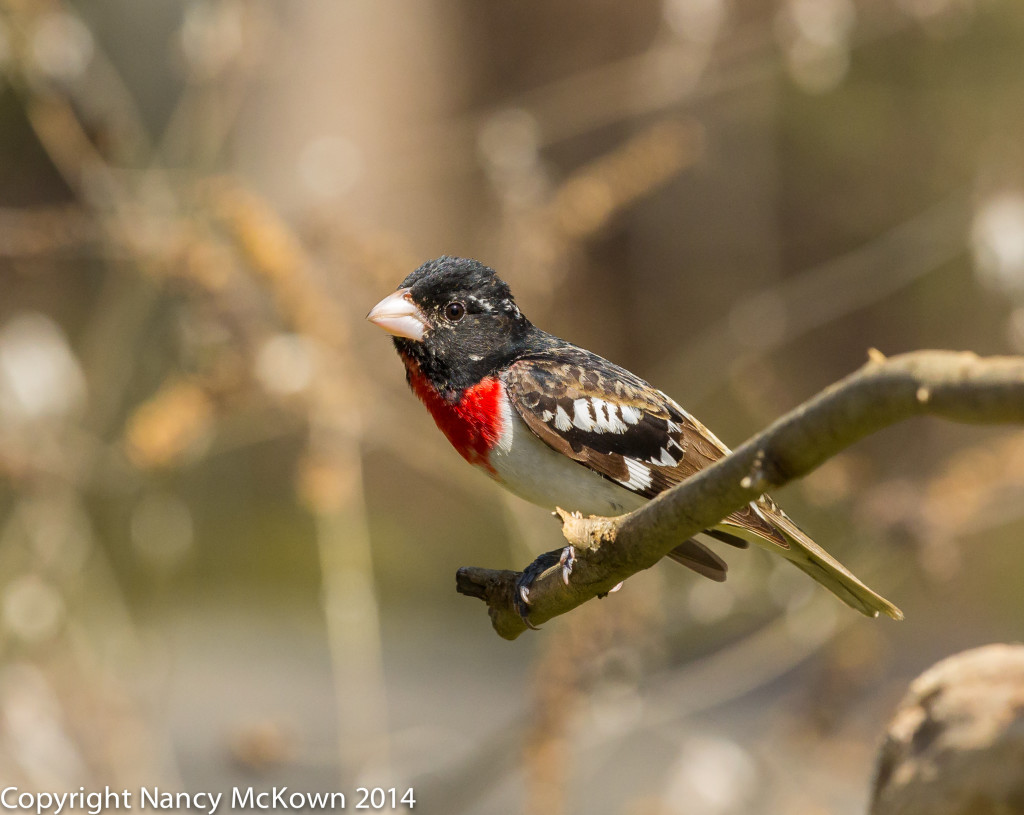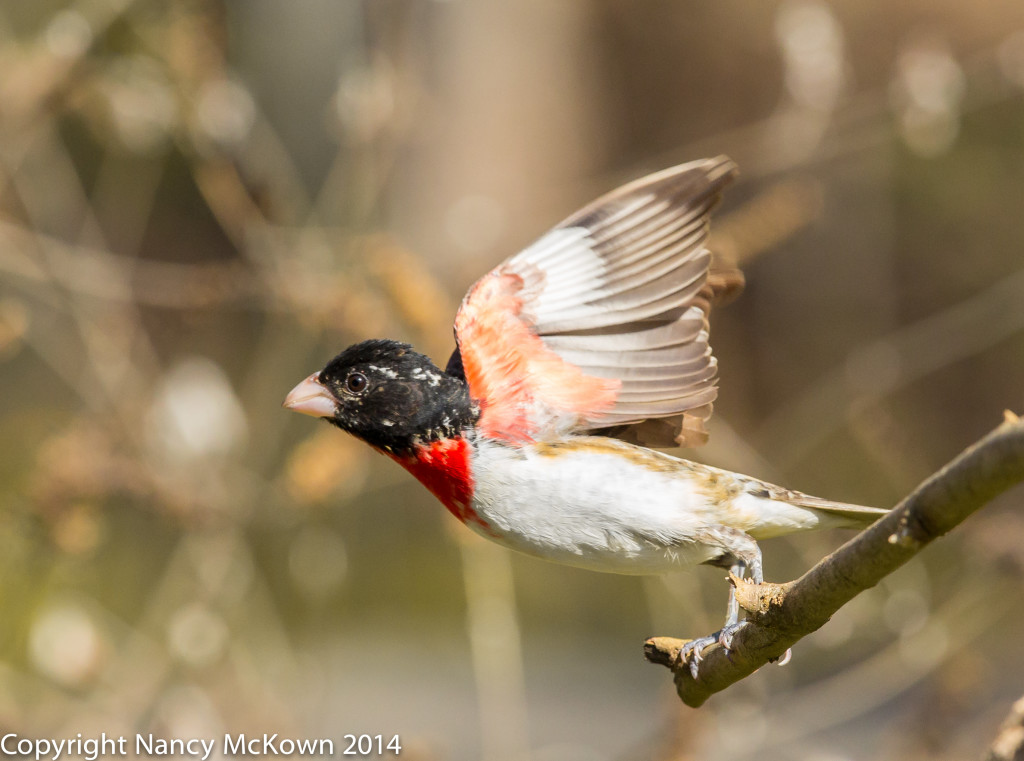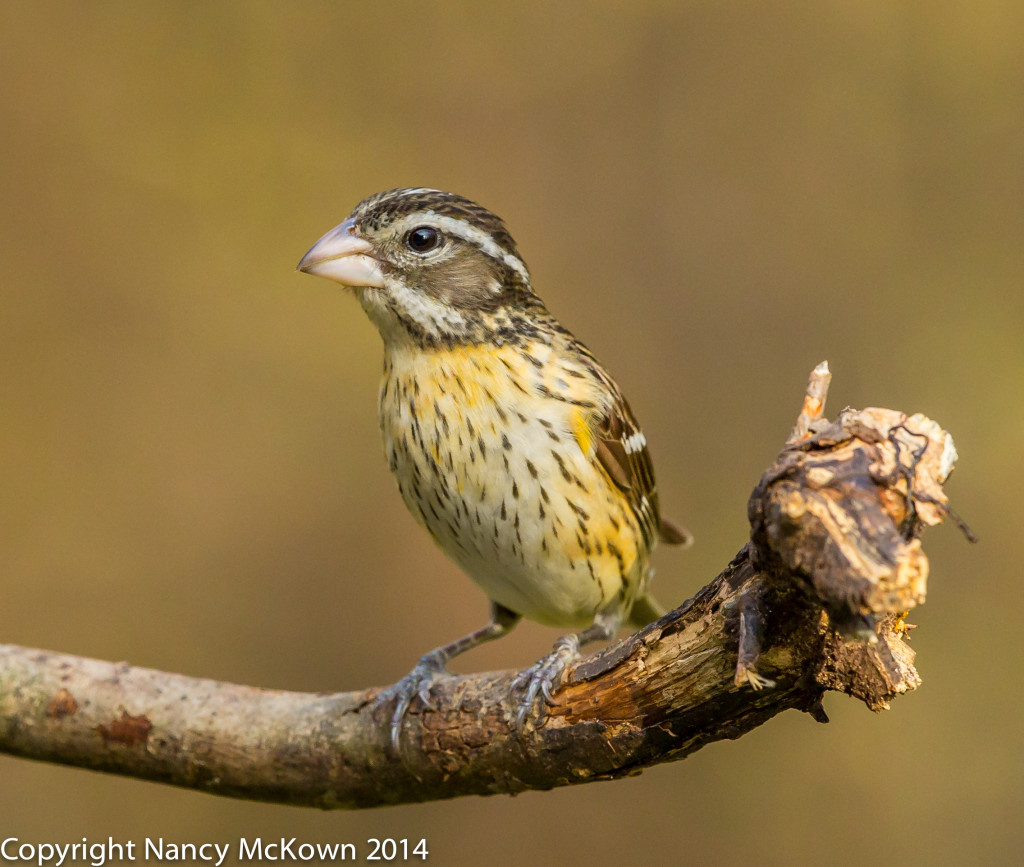Gardening for Wildlife
Some days, it’s nice to just stay home to watch and photograph the bird activity in my own back yard. Thanks to my husband’s long term planning, serious study and countless hours of hard work, our home’s landscaping is a beautiful and welcoming refuge for wildlife. Full of many different, shade loving, colorful, indigenous trees, bushes and plants, this inviting outdoor space provides an abundance of water, food, cover and nesting areas to attract a wide variety of wild birds. As our yard has blossomed and grown over the years, it has become a safe habitat for nesting birds and also weary migrating birds just passing through SW Michigan and needing a place to rest.

Still Has Some of His Brown Juvenile Feathers.
ISO 1600; f/6.3; 1/4000 Second
Photographing Rose Breasted Grosbeaks
Having this place, this wonderland in which to photograph birds, is a blessing. One of the most beautiful birds in our yard is the Rose Breasted Grosbeak. These large billed, stocky, medium sized birds are forest dwellers, and bold enough to be attracted closer to the house by the seeds in the bird feeders. The males are black and white, with a definitive bright red patch on their breasts. The females and juveniles have very different coloration, streaked brown and white feathers, but the same triangular bill.

ISO 1600; f/6.3; 1/4000 Second

With the Male Grosbeak. Sexual Dimorphism in Color is Very Common in Birds. Most Often, the Female is Blandly Colored- All the Better to Be More Concealed on the Nest.
ISO 1600; f/5.6; 1/1600 Second
Design Your Own Back Yard Bird Refuge
You can’t beat the convenience of staying home to photograph birds, whether you are sitting comfortably with your camera and cup of coffee inside your home, or setting up your blind and tripod outside in the yard.
Our property is an official Certified Wildlife Habitat®. The template for designing a wildlife habitat in your own yard is available from the National Wildlife Federation at this link. An essential component of this program is avoiding the use of chemical poisons. The diversity of plant life in our yard attracts many different species of wildlife that, in turn, help keep away damaging pests. Non-chemical, integrated pest management solutions are used when a pest problem is discovered. For a good resource on safe alternatives to the use of chemical pesticides, see this link.










and a gorgeous Certified Wildlife Habitat it is!!